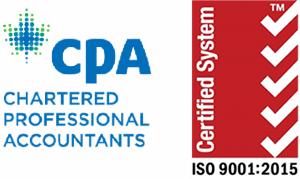When it comes to determining the value of your business, it’s important to recognize that business valuation goes beyond simple mathematics. While there are various methods to assess the worth of a company, it is essential to understand that the process is not an exact science. Different buyers will evaluate the same set of financials and offer vastly different amounts based on their unique circumstances. However, to gain some idea of what your business might be worth, let’s explore three common valuation methods.
- Assets-based Valuation:
The assets-based valuation is the most basic approach, focusing on the value of the company’s hard assets minus its debts. For instance, let’s consider a landscaping company that owns trucks and gardening equipment. In this method, the value of these physical assets is calculated by estimating their resale worth.
It’s important to note that this valuation method often yields the lowest value for your company. This is because it assumes that your business does not possess any “Goodwill.” In accounting terms, “Goodwill” refers to the difference between your company’s market value (what someone is willing to pay for it) and the value of your net assets (assets minus liabilities).
Most companies typically possess some level of Goodwill, so using the assets-based valuation alone may not provide an accurate representation of your company’s value. It is advisable to consider other methods in conjunction with this approach.
- Discounted Cash Flow:
The discounted cash flow (DCF) method focuses on estimating the present value of your business’s future cash flows to a potential acquirer. To begin, the buyer attempts to determine the expected profitability of your company in the coming years. The more stable and predictable your cash flows, the longer the buyer will consider the future cash flow stream.
Once the buyer estimates your future profitability and determines what the business would be worth upon selling it in the future, they apply a “discount rate.” This discount rate accounts for the time value of money and reflects the acquirer’s cost of capital and perceived risk associated with your business.
Instead of getting caught up in the complex math involved in the DCF valuation technique, it is crucial to understand the key drivers of value in this method. These drivers include: 1) the projected profitability of your business in the future; and 2) the reliability and accuracy of these estimates.
It’s worth noting that business valuation techniques are often either/or and not a combination. For example, if you opt for the discounted cash flow method, the hard assets of your company are assumed to be essential in generating the profit the acquirer is purchasing. Therefore, they are not included in the calculation of your company’s value.
To illustrate, a money-losing bed and breakfast situated on a $2 million plot of land would benefit from using the assets-based valuation method. On the other hand, a professional services firm projecting a $500,000 profit next year but possessing minimal hard assets would likely achieve a higher valuation using the discounted cash flow method or the comparables technique discussed below.
- Comparables:
The comparables method is another commonly used valuation technique that involves examining the value of similar companies that have recently sold or have publicized their worth. For example, accounting firms often trade at one times their gross recurring fees, while home and office security companies typically trade at around two times their monitoring revenue. This method is often employed by private equity firms seeking to consolidate small businesses within specific industries.
However, it’s important to exercise caution when utilizing the comparables methodology, as it can lead to inaccurate assessments. Comparing your company to significantly larger enterprises can result in misleading conclusions. For instance, a small medical device manufacturer might assume that they are worth 20 times their previous year’s earnings, just like a Fortune 500 company. In reality, smaller companies are often valued at a much lower multiple, such as five times their pre-tax profit.
It’s essential to consider the size and nature of your business when using the comparables method to avoid unrealistic expectations.
Ultimately, when selling your business, you do not have control over the valuation methodology chosen by the acquirer. The acquirer will perform their own calculations behind closed doors to determine the value your business holds for them. In some cases, an acquirer may view your business as strategic, leading to a significant reward for your company. However, in most instances, the acquirer will rely on one of the three techniques mentioned above to formulate an offer.
If you’re curious to gain insights into the potential value of your business, it is advisable to consult with professionals who specialize in business valuation. Their expertise and knowledge of the market can provide you with a more accurate estimation based on your specific circumstances.
In conclusion, while business valuation involves a degree of subjectivity, understanding and utilizing common valuation methods can help you gauge the potential worth of your company. Remember, these methods provide a framework, and there may be outliers that fall outside these boundaries. By triangulating around a realistic value, you can make informed decisions regarding the future of your business.







